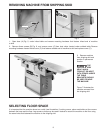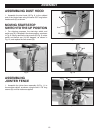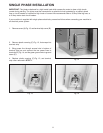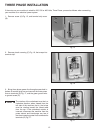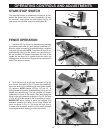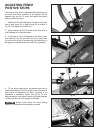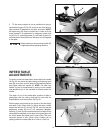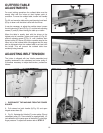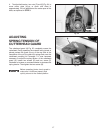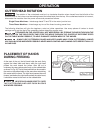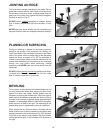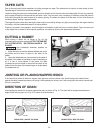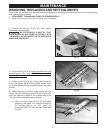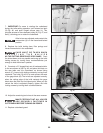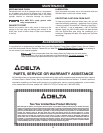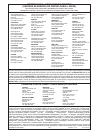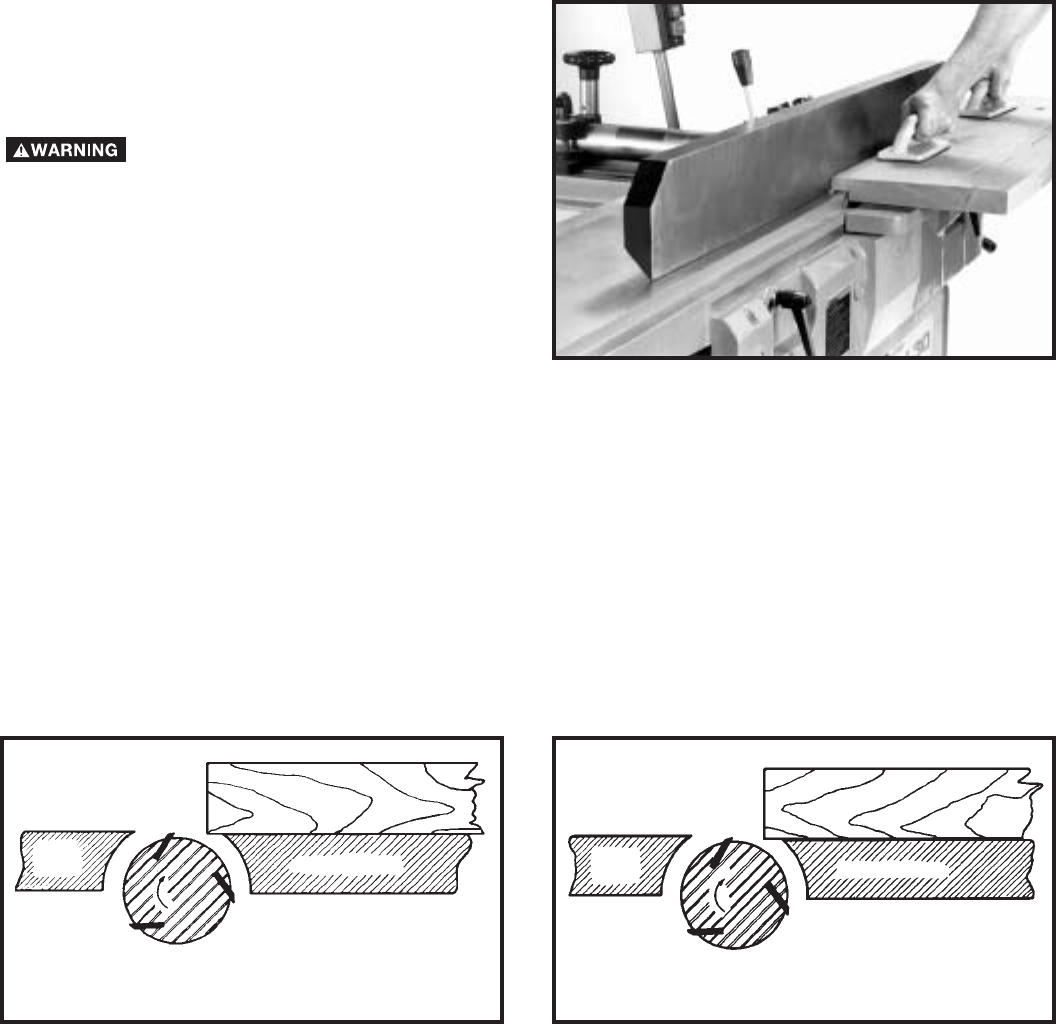
20
TAPER CUTS
One of the most useful jointer operations is cutting an edge to a taper. The method can be used on a wide variety of work.
Tapered legs of furniture are a common example.
Instead of laying the piece on the infeed table, lower the forward end of the work onto the outfeed table. Do this very carefully,
as the piece will span the knives and they will take a “bite’” from the work, with a tendency to kickback unless the piece is
firmly held. Now push the work forward as in ordinary jointing. The effect is to plane off all the stock in front of the knives to
increasing depth, leaving a tapered surface.
The ridge left by the knives when starting the taper may be removed by taking a very light cut according to the regular method
for jointing, with the infeed table raised to its usual position.
Practice is required in this operation, and the beginner is advised to make trial cuts on waste material. Taper cuts over part
of the length and a number of other special operations can easily be done by the experienced craftsman.
Fig. 40
CUTTING A RABBET
When making a rabbet cut, as shown in Fig. 40, the
cutterhead guard must be removed. AFTER THE RAB-BET
CUT IS COMPLETED, BE CERTAIN GUARD IS RE-
PLACED.
Use pushblocks whenever possible, as
shown.
1. Adjust the fence so that the distance between the end of
the knives and the fence is equal to the width of the
rabbet.
2. Lower the infeed table an amount equal to the depth of
the rabbet. If the rabbet is quite deep, it may be necessary to
cut it in two or more passes. In that event, the table
is lowered an amount equal to about half the depth of the
rabbet for the first pass, then lowered again to proper depth
to complete the cut.
Fig. 41 Fig. 42
JOINTING OR PLANING WARPED WOOD
If the wood to be jointed is dished or warped, take light cuts until the surface is flat. Avoid forcing such material down
against the table; excessive pressure will spring it while passing the knives, and it will spring back and remain curved after
the cut is completed.
DIRECTION OF GRAIN
Avoid feeding the wood into the jointer against the grain as shown in Fig. 41. The result will be chipped and splintered
edges. Feed with the grain as in Fig. 42, to obtain a smooth surface.
FRONT TABLE
FRONT TABLE
REAR
TABLE
REAR
TABLE
CUTTER
CUTTER
WRONG FEED - AGAINST THE GRAIN CORRECT FEED - WITH THE GRAIN



